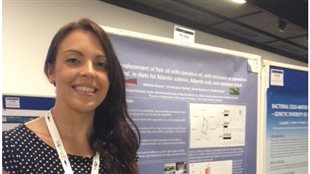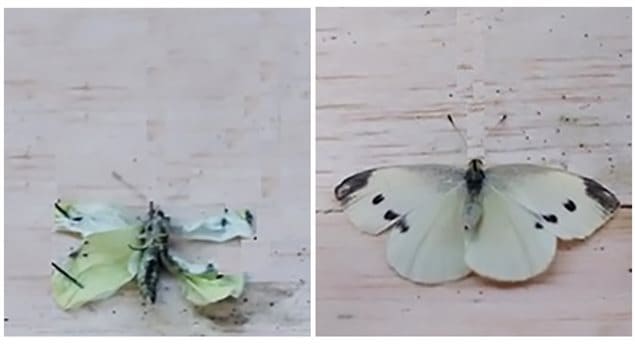Genetically engineered (or genetically modified) crops are touted not only as being safe, but also beneficial.
Two widely grown commercial crops have been recently genetically developed to create long-chain omega fatty acids in them. This is unique in that previous GMO plant development has been to increase yields and/or to be unaffected by herbicides, In this case the gene modifications are bioactive, that is the new qualities have an effect upon organisms that consume them.
This seems to be a good thing as humans need those omega-3 fatty acids for proper development, but new research shows what may be an unexpected drawback elsewhere in the ecosystem.
Stefanie Hixson (PhD) is a research associate in the Department of Chemistry and Biology, at Toronto’s Ryerson University,
Listen
Ms. Hixson is the lead author of a paper published in the science journal PLos One entitled Long-Chain Omega-3 Polyunsaturated Fatty Acids Have Developmental Effects on the Crop Pest, the Cabbage White Butterfly Pieris rapae
Humans need the omega-3 fatty acids eicosapentaenoic acid (EPA) and docosahexaenoic acid (DHA) commonly found in fish oil and algae. These are important for cardiovascular health and brain development and a number of other benefits connected to eyesight, the immune system, temperature acclimation and others.
But the need for these “fish oils” is increasing, putting strain on ocean resources.
By genetically engineering oil-seed crops like canola and camelina to produce these omega-3 acids, it can reduce the strain on fish stocks.
However, what researchers found is that when the omega-3 acids were tested in the lab on an insect, i.e., the cabbage butterfly (cabbage moth), the insects had a high rate of adverse effects, primarily wing deformity.

This seems to be because by genetically modifying the crop, developers are introducing a compound (from the sea) into an environment/ecosystem (the land) where it, and any invertebrates who feed on such crops have no natural exposure or evolution in connection with it.
Initially, the beneficial aspect for humans to having the vital omega-3 available in the oil-seed crops would seem to have the unexpected added beneficial aspect of harming a crop pest.
However, what is not known is what effect this may have on beneficial insects such as pollinating bees. It is also not know what effects may occur further up the food chain such as on predators consuming such insects.
Additionally, while all vertebrates require the omega-3 acids, those with no access to the sea, such as rabbits, produce tiny amounts on their own. Thus, yet another unknown with these GE crops is if additional amounts of these omega-3 acids would provide additional benefits to the rabbits or others species, including other species of insects, which could mean an increase in their health, reproduction etc. further resulting in a population increase in another farm pest species.
Ms Hixson, says this research has uncovered a whole new area of research surrounding this special bioactive GM crop development, which she hopes other scientists will begin to work on.
Funding for this work was provided by Ryerson University and Natural Sciences and Engineering Research Council (NSERC)







For reasons beyond our control, and for an undetermined period of time, our comment section is now closed. However, our social networks remain open to your contributions.